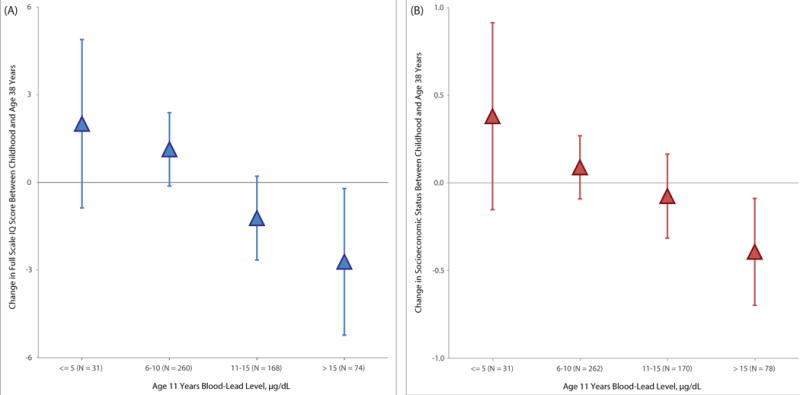Figure 3. Association of childhood blood-lead level with cognitive decline (Panel A) and downward socioeconomic mobility (Panel B) into adulthood (unadjusted for covariates).

Note. Mean change in outcome from childhood to adulthood with 95% confidence intervals (error bars) for each 5μg/dL higher level of blood-lead in childhood. To create IQ change scores, childhood IQ was subtracted from adulthood IQ where both IQs were measured on matched scales (WISC-R for child IQ and WAIS-IV for adult IQ). To create socioeconomic status change scores, childhood (i.e., parental) socioeconomic status was subtracted from adult socioeconomic status where both status variables were measured on comparable 6-category scales (the Elley-Irving scale for childhood and the New Zealand Socioeconomic Index for adulthood) assessing socioeconomic status in New Zealand by assigning occupations into one of six socioeconomic status groups (6 = professional; 1 = unskilled laborer). Each 5μg/dL higher level of blood-lead in childhood was associated with a 1.61-point decline (95%CI: −2.48, −0.74, P<.001) in full-scale IQ and with a 1.79-unit decline (95%CI: −3.17, −0.40, P=.01) in socioeconomic status (see Table 3).
